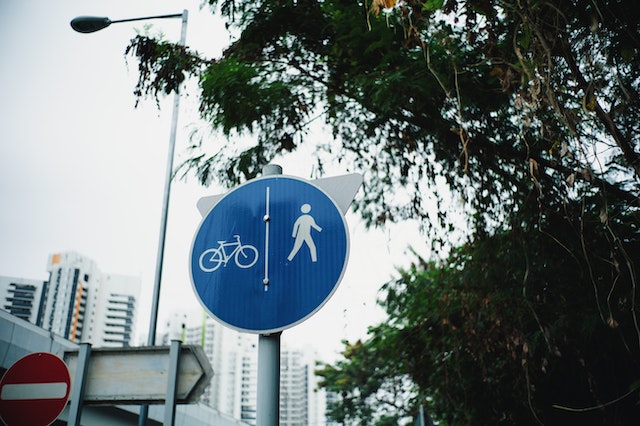Road safety is a shared responsibility that involves all road users, including pedestrians and cyclists. In recent years, there has been a growing focus on the role of pedestrians and cyclists in road safety, as cities and communities strive to create safer and more sustainable transportation systems.
In this article, we will explore the role of pedestrians and cyclists in road safety, including the risks they face, the strategies that can be used to improve their safety, and the importance of educating all road users about their responsibilities.
The Risks Faced by Pedestrians and Cyclists
Pedestrians and cyclists are some of the most vulnerable road users, as they have little protection in the event of an accident. According to the World Health Organization, around 1.3 million people die each year on the world’s roads, and pedestrians and cyclists account for around 26% of those fatalities.
There are many factors that contribute to the risks faced by pedestrians and cyclists on the road, including:
Poor infrastructure: Many roads and streets are designed primarily for cars, which can make it difficult for pedestrians and cyclists to navigate safely. This can include narrow or non-existent sidewalks, poorly marked crosswalks, and inadequate bike lanes.
Distracted driving: Drivers who are distracted by their phones, passengers, or other factors are more likely to overlook pedestrians and cyclists on the road.
Speeding: Drivers who exceed the speed limit or drive too fast for the conditions are more likely to cause serious accidents involving pedestrians and cyclists.
Impaired driving: Drivers who are under the influence of alcohol or drugs are more likely to be involved in accidents, including those involving pedestrians and cyclists.
Strategies for Improving Pedestrian and Cyclist Safety
There are many strategies that can be used to improve pedestrian and cyclist safety on the road, including:
Better infrastructure: Communities can invest in better infrastructure, such as wider sidewalks, protected bike lanes, and traffic calming measures, to make it safer and easier for pedestrians and cyclists to get around.
Education: Educating all road users, including drivers, pedestrians, and cyclists, about safe road use and the importance of sharing the road can help to reduce the risk of accidents.
Enforcing traffic laws: Strong enforcement of traffic laws, including speed limits, crosswalk laws, and bike lane laws, can help to deter unsafe driving behaviour and improve safety for all road users.
Encouraging active transportation: Encouraging more people to walk, bike, and use public transit can help to reduce congestion and pollution on the roads, while also improving public health.
The Role of Pedestrians and Cyclists in Road Safety
While there is much that can be done to improve the safety of pedestrians and cyclists on the road, these road users also have an important role to play in ensuring their own safety. This includes:
Being visible: Pedestrians and cyclists should wear bright or reflective clothing, and use lights or reflectors when walking or biking at night or in low-light conditions.
Following the rules: Pedestrians and cyclists should obey traffic laws, including crosswalk laws, bike lane laws, and traffic signals, to reduce the risk of accidents.
Being aware of their surroundings: Pedestrians and cyclists should be aware of their surroundings at all times, and avoid distractions such as phones or music players that can interfere with their ability to hear or see approaching vehicles.
Using caution: Pedestrians and cyclists should use caution when crossing the road or entering intersections, and make eye contact with drivers to ensure they have been seen.
Education and Outreach
Education and outreach are key components of improving road safety for all road users, including pedestrians and cyclists. Communities can work to educate drivers about the importance of sharing the road and obeying traffic laws, while also providing information and resources to pedestrians and cyclists about safe road use and the risks they face.
Schools and community organizations can also play an important role in educating young people about safe pedestrian and cycling practices. This can include teaching children about the importance of wearing helmets, crossing the road safely, and using bike lanes and other designated cycling areas.
In addition to education, outreach efforts can also help to promote safe road use and encourage more people to walk or bike. Communities can organize events such as bike rides and walking tours to promote active transportation and raise awareness about the benefits of walking and cycling.
The Importance of Collaboration
Improving road safety for all road users, including pedestrians and cyclists, requires collaboration and cooperation from all stakeholders. This includes government agencies, transportation planners, community organizations, and individual road users.
Government agencies can play an important role in creating policies and regulations that promote safe road use, such as investing in better infrastructure, enforcing traffic laws, and promoting active transportation. Transportation planners can work to design streets and roads that are safe and accessible for all road users, while community organizations can provide education and outreach to promote safe road use.
At the individual level, all road users have a responsibility to use the road safely and share the road with others. This includes being aware of the risks faced by pedestrians and cyclists, following traffic laws, and using caution when driving, walking, or cycling.
Conclusion
Pedestrians and cyclists play a crucial role in road safety, and improving their safety requires a comprehensive approach that involves all road users, from individual road users to government agencies and transportation planners. By investing in better infrastructure, promoting education and outreach, and encouraging safe road use, communities can create safer and more sustainable transportation systems that benefit everyone.

